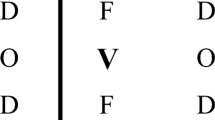Abstract
Grapevine leafroll-associated virus 3 (GLRaV-3) is a worldwide pathogen of Vitis negatively affecting wine production. In red berry cultivars grown in New Zealand, the foliar changes to GLRaV-3-infected vines inform decisions on vine removal (roguing). However, roguing does not always contain GLRaV-3 spread in the presence of an insect vector like the mealybug, Pseudococcus calceolariae. Virus incidence and mealybug abundance data collected annually over 7 years were modelled under differing scenarios to ascertain support for roguing. In a simulated 1 ha vineyard planted in 2500 mature Merlot vines, simulations over 20 years evaluated the effectiveness of roguing, ‘rogue 1 + 2’ (concurrent roguing of symptomatic plus both within-row neighbouring vines), inefficient roguing (50% of symptomatic vines rogued), and ‘no-action’. The model used variable initial GLRaV-3 incidence (0.4, 5, 10, 15 and 20%), and low, median and high vector densities (6, 26 and 75 mealybugs per 100 vine leaves, respectively). Roguing was the optimal response to GLRaV-3, independent of the initial incidence, but results were vector density dependent. At a low vector density, roguing relative to the other responses tested, sustained the lowest annual GLRaV-3 incidence, the least need to plant replacement vines and the lowest estimated average annual costs plus loss of income. At median and high vector densities, roguing remained the most favourable response but virus control was less effective and the costs incurred were higher. Thus, for vineyards affected by GLRaV-3, achieving economic sustainability relies on integrating efficient roguing with effective vector management.



Similar content being viewed by others
References
Almeida RPP, Daane KM, Bell VA, Blaisdell GK, Cooper ML, Herrbach E, Pietersen G (2013) Ecology and management of grapevine leafroll disease. Front Microbiol 4(94):1–13
Andrew R, Bell V, Hoskins N, Pietersen G, Thompson C (eds) (2015) Leafroll 3 virus and how to manage it. New Zealand Winegrowers. Auckland, New Zealand
Atallah SS, Gomez MI, Fuchs MF, Martinson TE (2012) Economic impact of Grapevine leafroll disease on Vitis vinifera cv. Cabernet franc in Finger Lakes vineyards of New York. Am J Enol Vitic 63:73–79
Bell VA, Chooi KM, Blouin AG, Cohen D, Pietersen G, MacDiarmid R (2015) GLRaV-3 in New Zealand: biological impact and timing of the symptoms influences on the management strategies. 18th Congress of the International Council for the Study of Virus and Virus-like Diseases of the Grapevine (ICVG), Ankara, Turkey, 7–11 September 2015
Bell VA, Blouin AG, Cohen D, Hedderley DI, Oosthuisen T, Spreeth N, Lester PJ, Pietersen G (2017) Visual symptom identification of Grapevine leafroll-associated virus 3 in red berry cultivars supports virus management by roguing. J Plant Pathol 99(2):477–482
Bell VA, Hedderley DI, Pietersen G, Lester PJ (2018) Vineyard-wide control of Grapevine leafroll-associated virus 3 requires an integrated response. J Plant Pathol 100(3):399–408
Golino D, Sim ST, Gill R, Rowhani A (2002) California mealybugs can spread grapevine leafroll disease. Calif Agric 56:196–201
Maree HJ, Almeida RPP, Bester R, Chooi K, Cohen D, Dolja VV, Fuchs MF, Golino DA, Jooste AEC, Martelli GP, Naidu RA, Rowhani A, Saldarelli P, Burger JT (2013) Grapevine leafroll-associated virus 3. Front Microbiol 4:82
Nimmo-Bell & Company Limited (2006) The Economic effects and financial impacts of GLRaV3. Report for New Zealand Winegrowers, Auckland, New Zealand
Petersen CL, Charles JG (1997) Transmission of grapevine leafroll-associated virus closteroviruses by Pseudococcus longispinus and P. calceolariae. Plant Pathol 46:509–515
Pietersen G, Spreeth N, Oosthuizen T, van Rensberg A, van Rensberg M, Lottering D, Rossouw N, Tooth D (2013) Control of grapevine leafroll disease spread at a commercial wine estate in South Africa: a case study. Am J Enol Vitic 64:296–305
Pietersen G, Bell VA, Krüger K (2017) Management of Grapevine Leafroll Disease and Associated Vectors in Vineyards. In: Meng B, Martelli GP (eds) Grapevine Viruses: Molecular Biology, Diagnostics and Management. Fuchs M. Springer International Publishing, Golino DA, pp 531–560
Ricketts KD, Gomez MI, Atallah SS, Fuchs MF, Martinson TE, Battany MC, Bettinga LJ, Cooper ML, Verdegaal PS, Smith RJ (2015) Reducing the economic impact of grapevine leafroll disease in California: identifying optimal disease management strategies. Am J Enol Vitic 66:138–147
Sisterson MS, Stenger DC (2013) Roguing with replacement in perennial crops: conditions for successful disease management. Phytopathology 103:117–128
Acknowledgements
We gratefully acknowledge joint funding for this research from the Ministry of Business, Innovation and Employment and New Zealand Winegrowers Research Centre Limited (NZWRC), Blenheim, New Zealand. We would like to acknowledge the support of Simon Hooker, Will Kerner, and Nick Hoskins (all of NZWRC). We thank two anonymous reviewers for their helpful comments, and Duncan Hedderley and Andrew McLachlan (both of Plant and Food Research) for reviewing an earlier version of this manuscript. Finally, we are grateful for the support of the vineyard owners and viticulture personnel who allowed us to access their properties over multiple years.
Author information
Authors and Affiliations
Corresponding author
Ethics declarations
Conflicts of interest
All authors are unaware of any conflicts of interest or competing interests likely to affect publication of this research; Data availability – the data presented in this paper are owned by New Zealand Winegrowers Research Centre Limited.
Additional information
Publisher’s note
Springer Nature remains neutral with regard to jurisdictional claims in published maps and institutional affiliations.
Supplementary Information
ESM 1
(DOCX 12.8 kb)
Rights and permissions
About this article
Cite this article
Bell, V.A., Lester, P.J., Pietersen, G. et al. The management and financial implications of variable responses to grapevine leafroll disease. J Plant Pathol 103, 5–15 (2021). https://doi.org/10.1007/s42161-020-00736-7
Received:
Accepted:
Published:
Issue Date:
DOI: https://doi.org/10.1007/s42161-020-00736-7




